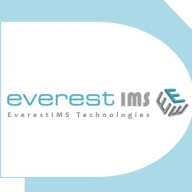

Infraon IMS and Azure Bastion are products in network management and security access. Azure Bastion seems to have the upper hand due to its comprehensive access security features.
Features: Infraon IMS provides strong network monitoring, real-time analytics, and multi-vendor compatibility. Azure Bastion offers secure RDP/SSH access, seamless integration with Azure services, and enhanced security protocols.
Room for Improvement: Infraon IMS could improve on its user interface, scalability for larger enterprises, and integration with non-network-related tools. Azure Bastion could enhance its compatibility with non-Azure environments, user authentication options, and reduce complexities in pricing plans.
Ease of Deployment and Customer Service: Infraon IMS offers straightforward deployment and high-level customer support, especially useful during initial setup. Azure Bastion has easy deployment within Azure but requires specific knowledge; customer service is responsive, though setup guidance is less hands-on.
Pricing and ROI: Infraon IMS is cost-effective, providing significant ROI for businesses on a budget. Azure Bastion has a higher setup cost, justified by advanced security features, with ROI linked to its robust security advantages.
| Product | Market Share (%) |
|---|---|
| Azure Bastion | 0.2% |
| Infraon IMS | 0.2% |
| Other | 99.6% |


| Company Size | Count |
|---|---|
| Small Business | 5 |
| Midsize Enterprise | 1 |
| Large Enterprise | 6 |
| Company Size | Count |
|---|---|
| Small Business | 3 |
| Midsize Enterprise | 2 |
| Large Enterprise | 3 |
Azure Bastion is a service you deploy that lets you connect to a virtual machine using your browser and the Azure portal. The Azure Bastion service is a fully platform-managed PaaS service that you provision inside your virtual network. It provides secure and seamless RDP/SSH connectivity to your virtual machines directly from the Azure portal over TLS. When you connect via Azure Bastion, your virtual machines do not need a public IP address, agent, or special client software.
Infraon IMS offers network monitoring with real-time dashboards, customizable GUIs, and integrated tools, supporting device management and workflow automation efficiently.
Infraon IMS delivers stable performance with features tailored for easy customization and detailed network management. Users benefit from real-time monitoring through role-based dashboards and integrated ticketing tools. However, improvements in reporting, GUI usability, and AI integration are needed. Challenges include monitoring non-IPBS devices and improving connectivity visibility. Users require seamless Infraon Desk integration, ease of device addition, and enhanced topology views.
What are the key features of Infraon IMS?In industries like IT infrastructure and data center management, Infraon IMS is utilized for network monitoring and managing key components such as leased lines and firewalls. Its capabilities aid diverse geographical locations in overseeing data centers, offering centralized monitoring and access to critical infrastructure.
We monitor all Network Monitoring Software reviews to prevent fraudulent reviews and keep review quality high. We do not post reviews by company employees or direct competitors. We validate each review for authenticity via cross-reference with LinkedIn, and personal follow-up with the reviewer when necessary.